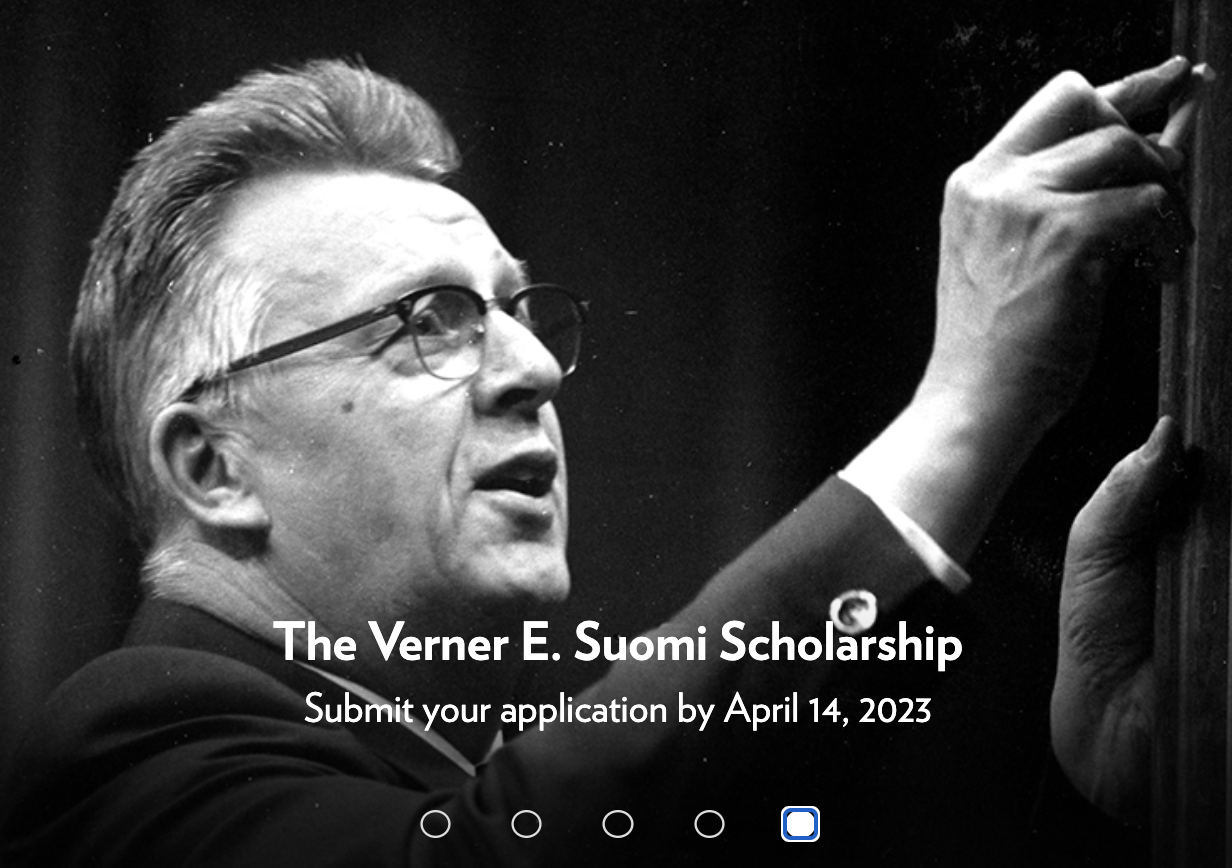
[ Archive ]

 |
CIMSS-NOAA Weekly Report [ Archive ] |
 |
CIMSS AND ASPB WEEKLY HIGHLIGHTS FOR THE WEEK ENDING JANUARY 13, 2023
DATA, INFORMATION, AND USE-INSPIRED SCIENCE:
FUTURE OUTLOOK:
AWARDS AND RECOGNITION:
TRAVEL AND MEETINGS:
Final Meeting of the WMO Subgroup on Capacity Development: In 2021, the World Meteorological Organization (WMO) Standing Committee on Earth Observing Systems and Monitoring Networks (SC-ON) formed the Subgroup on Capacity Development. Considering the importance of capacity development (CD) activities for design, establishment, sustainable operation and evolution of observing networks, the goal of the Subgroup was to identify the existing capacity development activities and capacity development requirements for each WMO domain. Jeff Key (STAR) represented the WMO Global Cryosphere Watch (GCW) in this activity. As a result of information obtained through surveys and direct communication with WMO programs, the group will make recommendations on training, gender equality, entraining young scientists, and the expansion of observing networks. The Subgroup on CD finished its work and held its last meeting on 13 January 2023. A final report is forthcoming. (J. Key, E/RA2, 608-263-2605, jeff.key@noaa.gov)
TRAINING AND EDUCATION:
MEDIA INTERACTIONS AND REQUESTS:
SOCIAL MEDIA AND BLOG Posts:
SSEC and CIMSS Scientists in the News: Scientists at the University of Wisconsin-Madison (UW) Space Science and Engineering Center (SSEC) and the Cooperative Institute for Meteorological Satellite Studies (CIMSS) provide expert interviews, imagery and case studies to promote science. This week: 1. CIMSS Scientist Derrick Herndon joined Live at Four (WISC-TV Madison) to explain the atmospheric river bringing heavy rains and flooding to the West Coast: https://www.channel3000.com/watch-what-is-an-atmospheric-river/. Herndon also recorded an interview for distribution via the Associated Press. 2. CIMSS announced that the 2023 Verner E. Suomi Scholarship is open for applications from high school students interested in studying atmospheric, climate and related sciences. Read more: https://www.ssec.wisc.edu/news/articles/14973/. 3. CIMSS Satellite Blog contributor Scott Bachmeier published these case studies: "Severe thunderstorms across the Deep South and Ohio Valley" (Jan. 12), "Water Vapor imagery sensing the surface of Hawai’i" (Jan. 10) and "Widespread fog/stratus over snow cover across the Northern Plains" (Jan. 6). Read more at the CIMSS Satellite Blog: https://cimss.ssec.wisc.edu/satellite-blog/. (D. Herndon, CIMSS, E. Verbeten, SSEC, S. Bachmeier, CIMSS, J. Phillips, SSEC, 608-262-8164)
 (Click image to enlarge)
(Click image to enlarge)
Figure: The 2023 Verner E. Suomi Scholarship is open for applications from high school students. Read more: https://www.ssec.wisc.edu/news/articles/14973/.
 (Click image to enlarge)
(Click image to enlarge)
Figure: A sequence of GOES-16 images showed widespread fog/stratus across parts of Montana, North and South Dakota and Minnesota during the day on January 6, 2023. With a quasi-stationary area of high pressure located over that area, winds remained light and the fog/stratus layer was slow to dissipate over much of the region. Read more at the CIMSS Satellite Blog: https://cimss.ssec.wisc.edu/satellite-blog/archives/49736. Credit: CIMSS, NOAA.
PUBLICATIONS:
WMO Guidelines for Satellite-based Nowcasting in Africa: At the request of the World Meteorological Organization (WMO), the Cooperative Institute for Meteorological Satellite Studies (CIMSS) participated as a co-lead-author in the development of the new Guidelines for Satellite-based Nowcasting in Africa (WMO-No. 1309), the English version of which have been published and is now available at the WMO Library Page: https://library.wmo.int/index.php?lvl=notice_display&id=22213. The document provides guidelines for the implementation of a range of satellite nowcasting options available across all of Africa based using data from the Meteosat Third Generation (MTG) satellite system. The guidelines are urgently needed, given that there is currently a lack of early warnings on very short timescale in Africa and support efforts to "encourage and support the strengthening of African capacities ... to ensure a smooth transition to MTG ... and establishing, based on existing capacities, an African Meteorological Satellite Application Facility (AMSAF) leading to the generation of Africa-tailored satellite products ... answering to African requirements ....". The intention of the document is to contribute to increased provision of useful nowcasting services in African countries by providing guidance to National Meteorological and Hydrological Services (NMHSs) and their partners as to the practical and affordable solutions available now and into the near future. (R. Petersen, CIMSS, 262-763-2583)
OTHER:
| Archived Weeklies Page | Submit a report item |